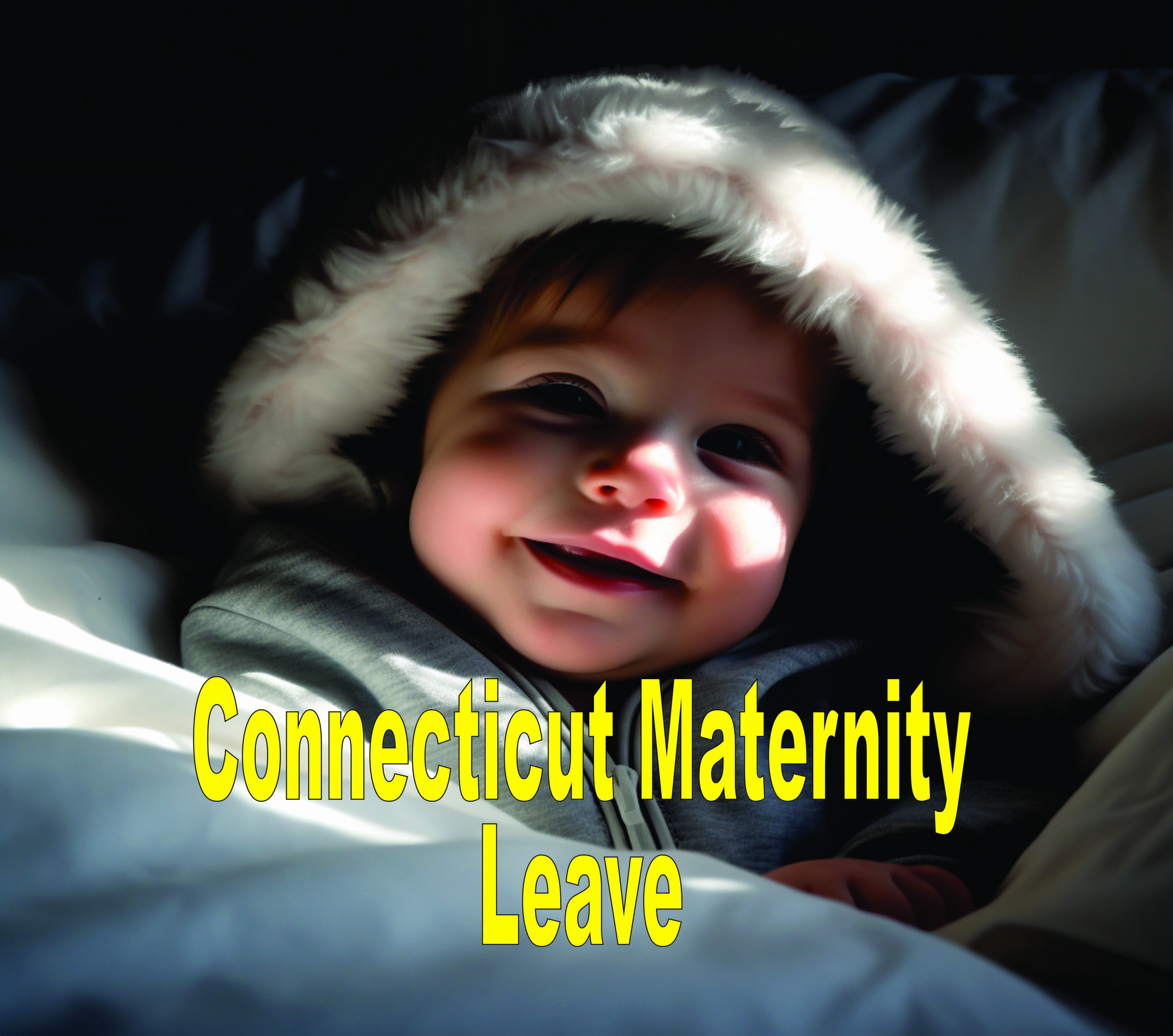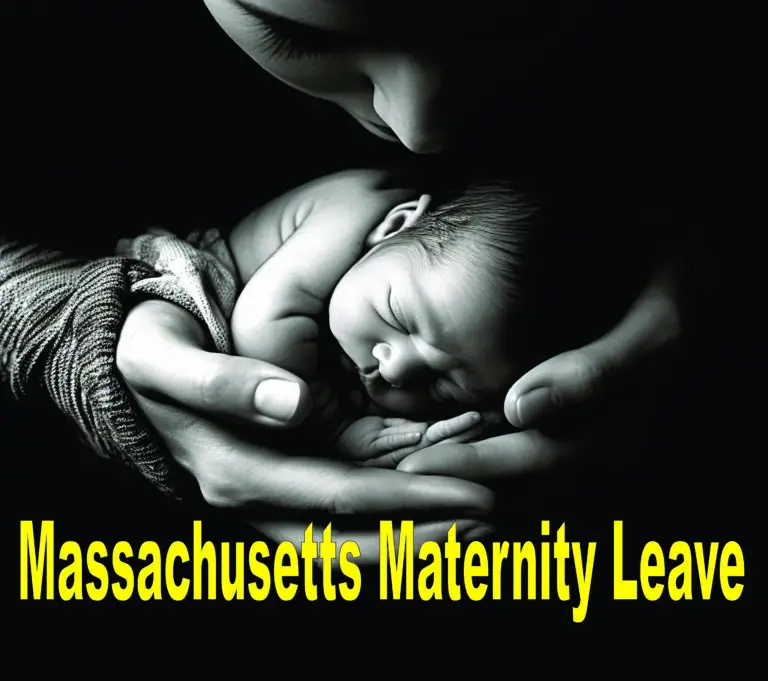Connecticut Maternity Leave

Last Updated on May 23, 2024 by Kathy
In 2019, Connecticut was the seventh state (along with Washington D.C.), to adopt a Paid Family and Medical Leave Act (PFMLA). Many residents of Connecticut will now be able to take advantage of paid family and medical leaves beginning January 1, 2022. Paid leave isn’t just for newborns, the employees can use the benefit for a number of reasons, including to care for their family members or for their own health.
Like other state-paid leave benefits, eligibility is determined by where the person works, not their location. Residents who live in New York and New Jersey for work are not eligible. These workers might be eligible for New York and New Jersey’s respective paid family leave laws.
Maternity leave in CT in 2024
As someone who has experienced the impact of Connecticut’s Paid Family and Medical Leave Act firsthand, I can attest to the significant benefits it offers to workers in the state. The program relies on a 0.5% payroll tax, which started in January 2021. It’s worth noting that the tax is set at the same income threshold as Social Security ($142,800 for 2021). While the implementation is ongoing, there are some details, like the process for accessing the benefit, that will be ironed out as the program progresses.
How many weeks of paid family leave do I get?
Connecticut’s Paid Family Leave Program offers 12 weeks of parental leave (maternity or paternity leave), paid at a partial salary, to bond with a newborn child. For birth mothers who have suffered a severe health condition during pregnancy, labor, or delivery, an additional two weeks may be eligible for paid leave.
Connecticut’s family law laws previously provided 16 weeks of paid leave over a period of two years. However, this was only available to employers with 75 or more employees and required that an employee has worked at most 1,250 hours per year. The program was amended to link with the paid leaves benefit. Nearly all employees in the private sector and some public employees are eligible for paid leave. Williamson stated that the paid leave benefit will be available to a wider range of employees.
The new law doesn’t allow for additional leave after the paid leave has expired.
Who qualifies for paid family leave?
Having personally gone through the process of applying for paid family leave in Connecticut, I can confirm that eligibility is not limited to full-time employees or specific company sizes. Whether you work part-time or are self-employed, you can still access the benefits. However, it’s crucial to note that there are some exceptions, such as teachers, federal employees, and Board of Education members, who may have different leave arrangements.

Eligibility is not dependent on residency. The benefit is not available to people who live in Connecticut but work elsewhere. Residents of Connecticut who work in another state are not eligible for the benefit, as the bill is entirely funded by payroll tax contributions from employees.
An employee must have earned approximately $2,300 during the last year while working in Connecticut. The total amount can be obtained through multiple jobs with different durations to be eligible for the paid-leave benefit. This is in contrast to other paid leave laws such as FMLA which require that an employee works for a specific amount of time at one job. Williamson explained that Connecticut’s paid-leave laws are similar to those for unemployment and can be used to cover more people who change employers within a year.
Who does NOT qualify for paid leave in Connecticut?
Federal employees are not eligible for Connecticut-paid family leave. This is the same across all paid leave programs. Unionized state and municipal employees do not qualify. However, unions will be able to opt in and include paid family leave in the bargaining process.
An unusual arrangement is made for educators. Employees of local and regional boards of education, and employees of private and parochial schools (nonpublic elementary and secondary schools) are not eligible to access the state’s paid leaves program. Public school employees will be able to take advantage of the paid leave benefits through their union’s collective bargaining process.
Although this exemption does not apply to parochial and private schools, it is common. It predates the paid-leave bill because it was part of Connecticut’s original unpaid leave policy that was passed in 1996. According to one expert familiar with the discussions, advocates hope to make this exclusion permanent.
How much will I be paid?
I can assure you that the wage replacement policy is generous, particularly for low-income workers. If you earn the equivalent of 40 hours per week of the minimum wage, you can expect 95% of your weekly earnings during the leave. Additionally, earnings above the 40-hour/minimum wage threshold will still be paid at 60%. It’s essential to note that the state minimum wage cap is 60 times the minimum wage amount.
Connecticut is increasing the state minimum wage to $13 in 2021 with two additional increases to $15 and $14 in 2022.
Workers earning a minimum wage of $494 per week (or 40x the minimum wage) will receive a weekly benefit equal to $494 in January 2022. This amount will increase to $532 on July 1, 20,22, and $570 on May 1, 2023. The maximum benefit will equal 60 times the minimum wage and will be $780 per week in January 2022. It will increase to $840 on June 1, 2022, and $900 by June 1, 2023.
This is the maximum an employee can get under state law. However, it does not include employer-provided benefit benefits that may offer full, salaried paid leaves for employees.
FAQs
Can I take paid family leave for something other than a new baby?
Yes, you can take 12 weeks of paid leave to help with illness recovery, caring for a loved one who is sick, or being an organ donor or marrow donor.
Eligible family members include those who are called to active duty, to provide care for an injured military member and any other exigencies.
Having explored Connecticut’s Paid Family Leave law extensively, I want to emphasize the program’s crucial support for individuals affected by family violence. If you find yourself in such a situation, you can utilize up to 12 days of paid leave to seek medical or psychological treatment, access victim services organizations, relocate, or participate in any relevant civil or penal proceedings. This provision ensures that those facing family violence receive the necessary support during challenging times.
Can I take more than 12 weeks off?
Yes, two additional weeks are available for pregnancy complications, but this is only available to women giving birth. (A spouse, adoptive parent, or child will not be eligible.
Employers may offer additional time to employees that can be used in conjunction with the state benefit. However, employers cannot force employees to use all their paid time before they use the benefit. Employees can retain two weeks of paid time to be used when they return from paid family leave, as stated in the law.
Do I need to use all my leave at once?
No, you do not. The leave is granted for adoptions, foster children, and new babies up to 12 months following the qualifying event. Williamson said that leave for other qualifying needs is tied to the time you use it. Paid leave can be granted for consecutive days or weeks. However, it may also be available for intermittent time off in certain circumstances.
What about my spouse?
Your spouse would be eligible if they meet the eligibility criteria. However, one spouse is eligible does not automatically mean the other is.
What if I foster, adopt, or use a surrogate? Are those qualifying events?

Yes, all that’s said above is a qualifying event for the 12 weeks of paid leave.
Who is included in taking time off for family members?
Connecticut law recognizes that many people can be considered family members and could need care from an employee. Family members can be a spouse, sibling, son or daughter, grandparent, grandchild, or parent. Or, an individual related by blood or affinity to the employee and whose close relationship with the employee is equivalent to those family relationships.
How is the benefit paid for?
Contrary to other paid family benefits, Connecticut’s paid leave law is funded through employee payroll deductions. This is similar to California and Rhode Island. The program in Washington D.C. was funded exclusively by employer payroll contributions. Other states, like New York and New Jersey, use a hybrid model. Beginning January 1, 2021, employees will be able to deduct up to 0.5% of their wages. This is in addition to the Social Security contribution base of $142,800 (in 2020).
Don’t worry, you will not see a tax increase.
If my company pays for some portion of my leave, can the state law cover the rest up to 100 percent of my salary?
Based on my own experience and discussions with experts, the process of integrating state and employer benefits in Connecticut is still undergoing refinement. Employers are likely to receive some state-supported compensation for their existing paid leave benefits, a model successfully adopted in other states with paid family leave. As we approach the implementation date, more details on this mix of benefits are expected to be finalized.
“Every state with paid leave programs has found a way [to] find the right relationship between private employer benefits and state benefits. Williamson said that we are still 11 months from the end, and some pieces of how this will work still need to be found.
Is the leave pay taxed?
Paid family leave will be subject to the same tax as income. The statute allows the benefit recipient to receive benefit payments with or without tax withholding.
What do I have to do to get the money? How am I paid?
Some of the processes are still being developed because the benefits will not start until 2022.
Barton Reeves stated that the system is being developed. The Insurance Authority issued an RFP for administration and claims payments. More information will be available about the systems that will allow employees to file claims and receive benefits.
Are there any monetary caps on the benefit annually or during one’s lifetime?
I can confirm that there is no lifetime cap on the benefits you can receive. However, it’s essential to note that the reimbursement benefit is limited to a total of 60 weeks at the minimum wage. At the start of the program in January 2022, the maximum benefit at 60 times the minimum wage will be $780 per week. Subsequently, on July 1, 2022, it will increase to $840, and by June 1, 2023, it will reach $900. Additionally, as the state minimum wage rises, the benefits will continue to be adjusted accordingly.
Do I still receive my benefits and job protection while I’m out?
Drawing from my personal experience, I can confirm that Connecticut’s Paid Family Leave program provides crucial job protection, allowing you to take the time off you need without risking your employment. However, it’s important to be aware that the program does not explicitly protect your health insurance.
In some cases, workers may be entitled to retain their health insurance under other laws, such as the federal Family and Medical Leave Act (FMLA), or through collective agreements with their employers. Additionally, it’s worth noting that Connecticut’s paid-leave program offers a broader range of eligibility requirements and greater flexibility compared to FMLA, which means that employees may qualify for state-paid leave but not necessarily for federal FMLA.
What about self-employed and freelancers, do they qualify for paid leave?
As someone who has looked into Connecticut’s Paid Family Leave program extensively, I can confirm that self-employed individuals and freelancers are indeed eligible for paid leave. The program provides support to those who have qualifying reasons, and there is no specific time limit for enrollment. To be eligible, you simply need to have paid into the system for at least three years, ensuring that even independent workers can benefit from this valuable program.
How has COVID-19 changed anything on the Connecticut Paid Family Leave plan?
As someone who has researched extensively about the impact of COVID-19 on Connecticut’s Paid Family Leave program, I can confirm that the implementation dates have remained unchanged despite the pandemic. However, it’s essential to recognize that the pandemic has significantly affected many lives, leaving some individuals with lasting health effects or ongoing caregiving needs. This underscores the importance of providing additional paid leave support to those affected by the pandemic.
Where do I go if I have more questions?
For individuals seeking additional information or with specific queries about Connecticut’s maternity leave, I highly recommend visiting the official website of the Connecticut Paid Family and Medical Leave Insurance Authority. This agency is responsible for implementing the paid-leave policy and offers valuable insights and resources to assist you with any questions you may have.





